Professional chef and Sacramento County Master Gardener Andi Macdonald shares her California-style gumbo recipe in the brief chat at the top of this edition of the Garden Basics’ “Beyond Basics” newsletter.
Mardi Gras season is also gumbo season in Lousiana. And we know a good thing when we taste it. Gumbo dishes have spread, and can be found served on a regular basis everywhere, including the dining rooms of Congress. What makes Andi’s gumbo recipe unique: it’s vegan.
“Sacrilegious!”, you say, about a dish that goes back hundreds of years in Louisiana, a staple of an early American diet that features meat as the main attraction. To quote Wikipedia:
“Gumbo is a heavily seasoned stew that combines several varieties of meat or seafood with a sauce or gravy. Any combination of meat or seafood can be used. Meat-based gumbo may consist of chicken, duck, squirrel, or rabbit, with oysters occasionally added. Seafood-based gumbo generally has shrimp, crab meat, and sometimes oysters. Andouille sausage is often added to both meat and seafood gumbos to provide "piquancy, substance, and an additional layer of flavor" to the dish. The key is to use a tender andouille so it does not become too chewy. Most varieties of gumbo are seasoned with onions, parsley, bell pepper, and celery. Tomatoes are sometimes used in seafood gumbo, but traditionally few other vegetables are included.”
“I have been a vegan for the past 2-1/2 years,” explains Macdonald, who trained at Michelin-starred restaurant Chez Panisse in Berkeley, CA, where founder Alice Waters developed the concept of California Cuisine and promoted the farm-to-table movement. Macdonald goes on to say: “I work at creating upscale vegan cuisine. I believe that all food should be wonderful, and there's no reason vegan cuisine can't meet a high bar. I also don't believe that following a vegan diet should be a political statement. Humans have evolved to like certain tastes and textures and that can be achieved in vegan cooking.”
Here’s the recipe:
Vegan Gumbo Yaya
By Andi MacDonald, Sacramento County Master Gardener / Professional Chef
Serves 8
What makes gumbo so special is the roux, a cooked mixture of flour and fat that both thickens and flavors the stew. Depending on what it will be used for, roux can be white, blond, brown, or black. For this gumbo, the aim is a very dark red-brown roux, which takes patience and a good eye. One way to tell that you’ve reached perfection is that the roux will smell like popcorn.
You can buy Creole seasoning from just about any grocery store or make your own. Making your own is pretty cheap and not difficult. There’s a recipe for a spice mix following the gumbo recipe.
Textured vegetable protein (tvp) is a gluten-free soy product available in many grocery stores. It can also be ordered online.
½ cup neutral oil, such as canola oil
½ cup AP flour
1 red bell pepper, diced
1 green bell pepper, diced
1 celery stalks, diced
1 yellow onion, diced
½ lb vegan Italian sausage, in ¼” slices
1 tablespoon Cajun/Creole seasoning (or to taste)
2 teaspoons Kosher salt (or to taste)
½ teaspoon black pepper (or to taste)
1 bay leaf
1 teaspoon chili powder
½ teaspoon dried oregano
2 teaspoons minced garlic
1 ½ cups textured vegetable protein, large chunks
7 cups vegetable stock
1 tablespoon filé powder mixed with water (optional, see comments in #7 below
Combine the peppers, celery, and onions into a bowl and set aside.
In a separate bowl combine textured vegetable protein with 1½ cups of warm water (or vegetable stock for more robust flavor). Cover and set aside.
Pay close attention – this next step is crucial! Heat the canola oil in a heavy saucepan. When it gets hot, add the flour gradually, while vigorously stirring with a wire whisk. Boil the mixture and whisk as it continues to boil. Keep stirring until the roux becomes a dark reddish brown color and smells like popcorn. Be careful not to splash yourself or touch the side of the pan with your arm. Be both attentive and brave – this procedure could take anywhere from 20 to 45 minutes. Do not ever, ever, ever walk off and leave it.
Pull the pan off the flame. Add half of the vegetable mixture, and with a long handled wooden spoon, stir for 1 minute. It will splatter and steam – so be careful!
Return to the flame. Add the remaining vegetable mixture and stir for an additional minute.
Gradually stir in the vegetable stock. Add the sausage, spices, herbs, garlic, and soaked textured vegetable protein. Bring to a boil, reduce heat, and simmer for 45 minutes, stirring occasionally.
Fifteen minutes before serving, check the gumbo. If it seems too thick, add more stock. If it seems thin, thicken with a filé slurry (filé powder mixed with enough water to form a pourable paste). Taste and add salt if desired.
Serve over rice and top with fried okra pieces. Some cooks add okra to the stew with the other vegetables. Personally, I find boiled okra too slimy. It’s best if it’s fried and sprinkled on top. Win-win for both camps!
Creole Seasoning
2 tablespoons paprika
1 tablespoon smoked paprika
2 tablespoons garlic powder
1 tablespoon ground black pepper
1 teaspoons ground white pepper
1 tablespoon onion powder
1 teaspoon chipotle powder
1 teaspoon ground cumin
1 teaspoon ground coriander
1 teaspoon salt
1 teaspoon msg (optional)
Combine ingredients in a small jar and stir or shake to blend.
=====================================
Although I am very familiar with the smell of freshly-made, stovetop or air-popped popcorn (which, by the way, has a much more pleasant aroma than overly zapped, artificially flavored, microwave popcorn), I had questions about some of her ingredients: neutral oil? AP flour? Filé powder?
“Neutral oil is an oil that doesn't have a strong flavor, such as canola, corn, grape seed, and mild olive oils,” explains Macdonald. “AP flour is white all-purpose flour, the kind used for just about everything. Filé powder, also called gumbo powder, is dried sassafras root. It is traditionally used to thicken gumbo. It's mixed with water to form a glutinous slurry (fancy chef talk for paste), which is then stirred into the gumbo, usually not long before serving. It's probably available at stores, but I order it from Amazon because I don't have the time nor inclination to drive all over the county trying to find it. In place of filé, a cornstarch slurry would work, as would potato flakes; neither exactly traditional, but it thickens the stew. Gumbo is served over rice.”
And as you heard in our chat, “Yaya” is the Greek endearment for “grandma”.
You’ve probably grown many of the ingredients of this gumbo recipe. But celery? Okra? And what about growing your own seasonings, including cumin, coriander, paprika, and chipotle?
Celery
As odd as it sounds, the primary commercial growing areas for celery in the United States are California and Michigan. Two very different climates. However, the majority of commercial farms in California growing celery are nestled in the fertile valleys near the Pacific Ocean, areas that seldom get above 90 degrees or below 40 degrees. Celery prefers climates without the extreme temperatures (which is Michigan in the summertime). In hot climates, success depends on your timing. Celery plantings in March and April or August through November in hot summer areas helps this sensitive crop dodge the heat in its developmental stages. For most of the country, March is the ideal month to start celery from seed, indoors. Set out transplants (which are much easier than from seed) in hot summer areas in March or April; in mild areas of the country set them out in late May or early June. Read more here from Johnny’s Selected Seeds about growing celery.
Okra
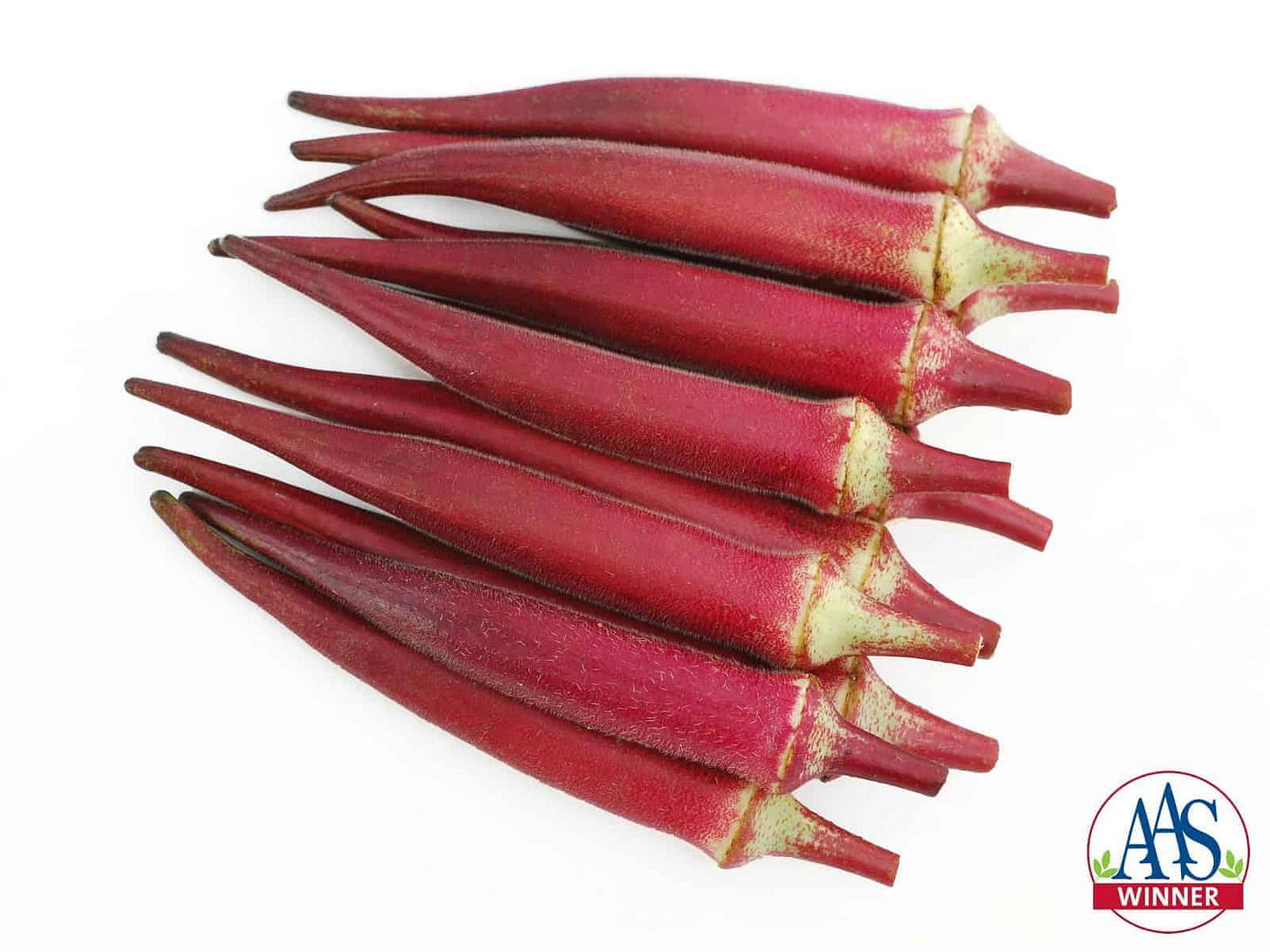
“Valued as a key ingredient in authentic Southern gumbo and other soups and stews, okra can also be roasted, pickled, dipped, or grilled. Despite being slow to evolve from seeding to fruiting, pods form repeatedly and quickly in late summer.” Here’s more from the Sonoma County (CA) Master Gardeners on how to grow okra.
Chipotle
Not the restaurant chain. It’s a dried, smoked jalapeño pepper. The website, chilipeppermadness.com says it takes 10 pounds of jalapeños to make one pound of chipotles. Here’s how to do it, from that same website.
Cumin and Coriander: Two Different Plants
The cumin plant: Cuminum cyminum. Here’s how to grow this herb and harvest its seeds, from West Coast Seeds.
The Coriander plant, Coriandrum sativum. But you may know is by its other common name, cilantro. A cool season crop in hot areas; a summer crop in milder areas. However, if all you want are the cilantro leaves, hot climate gardeners can grow it as a micro green in a shady area. Fill a tray with a light, seed-starting soil, scatter the cilantro seeds throughout. When they get a few inches tall, give it a haircut of about an inch or so from the top, and harvest just the upper leaves. The book, The Sunset Western Garden Book of Edibles says this about harvesting the coriander seeds: “To collect seeds, pull up whole plants when fruits (which look like seeds) begin to turn gray-brown; then put the plants headfirst into bags and shake them; or, hang them over paper and let seeds drop.”
Paprika
Grow it like you would a pepper. Because, it’s a pepper! Renee Shepherd of Renee’s Garden seed company is fond of the “Hungarian Magyar” paprika pepper, and explains how to grow it here.
As an Amazon Associate, I earn from qualifying purchases from some of the underlined links in the newsletter. This is how I am trying to keep this a free newsletter. And as long as you buy whatever you want from Amazon using any of those links to get into the Amazon site, I get a few pennies. Thank you.
Thanks for Subscribing and Spreading the Word About the Garden Basics with Farmer Fred newsletter, I appreciate your support.
And thank you for listening to the Garden Basics with Farmer Fred podcast! It’s available wherever you get your podcasts. Please share it with your garden friends.
Fred Hoffman is also a University of California Cooperative Extension Master Gardener in Sacramento County.










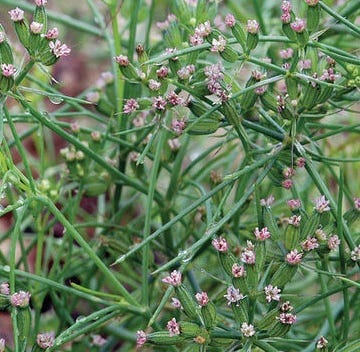
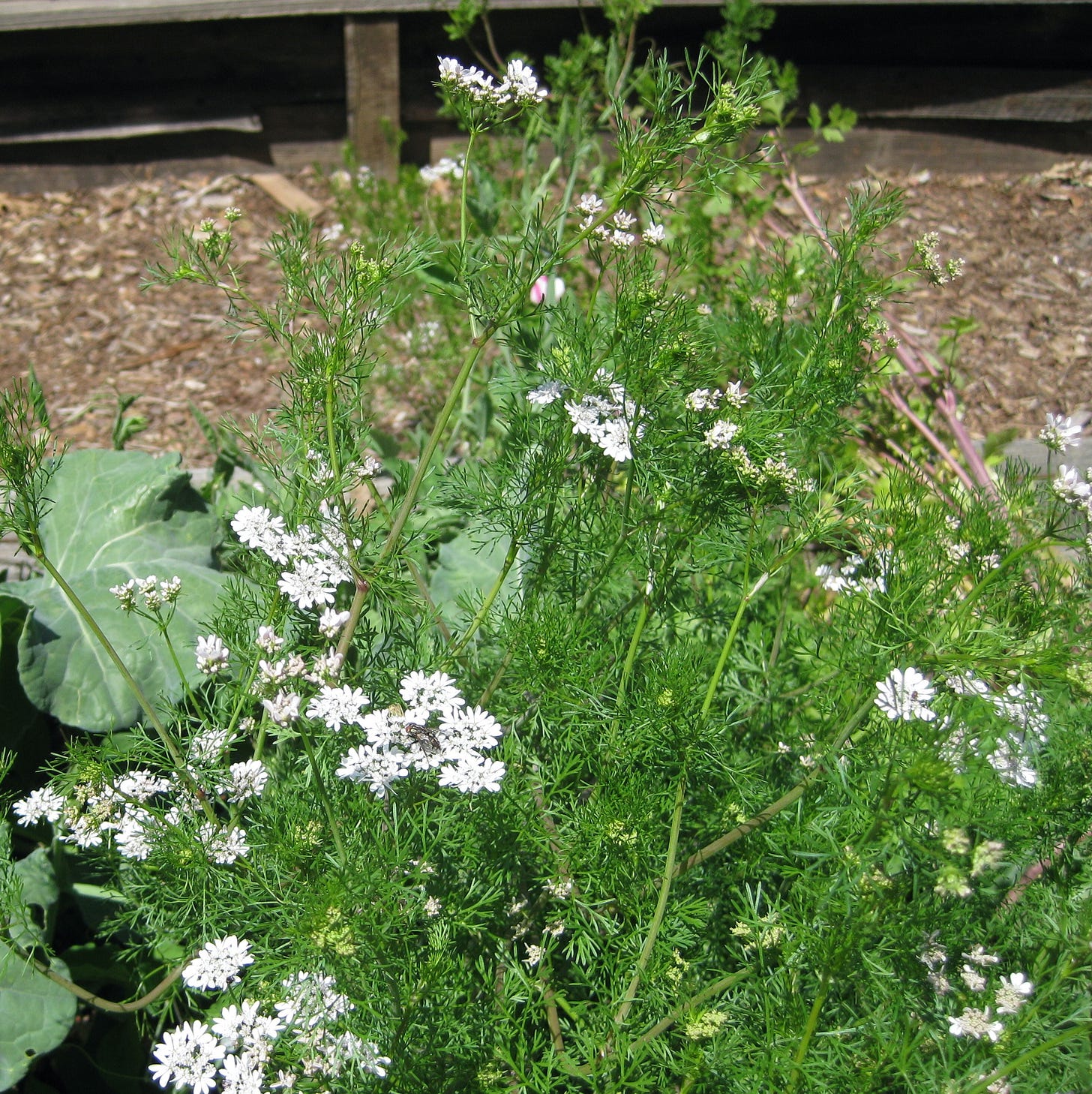
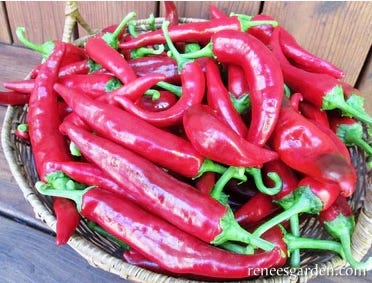


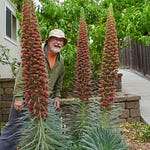

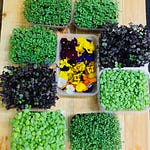


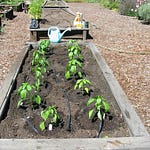

Share this post